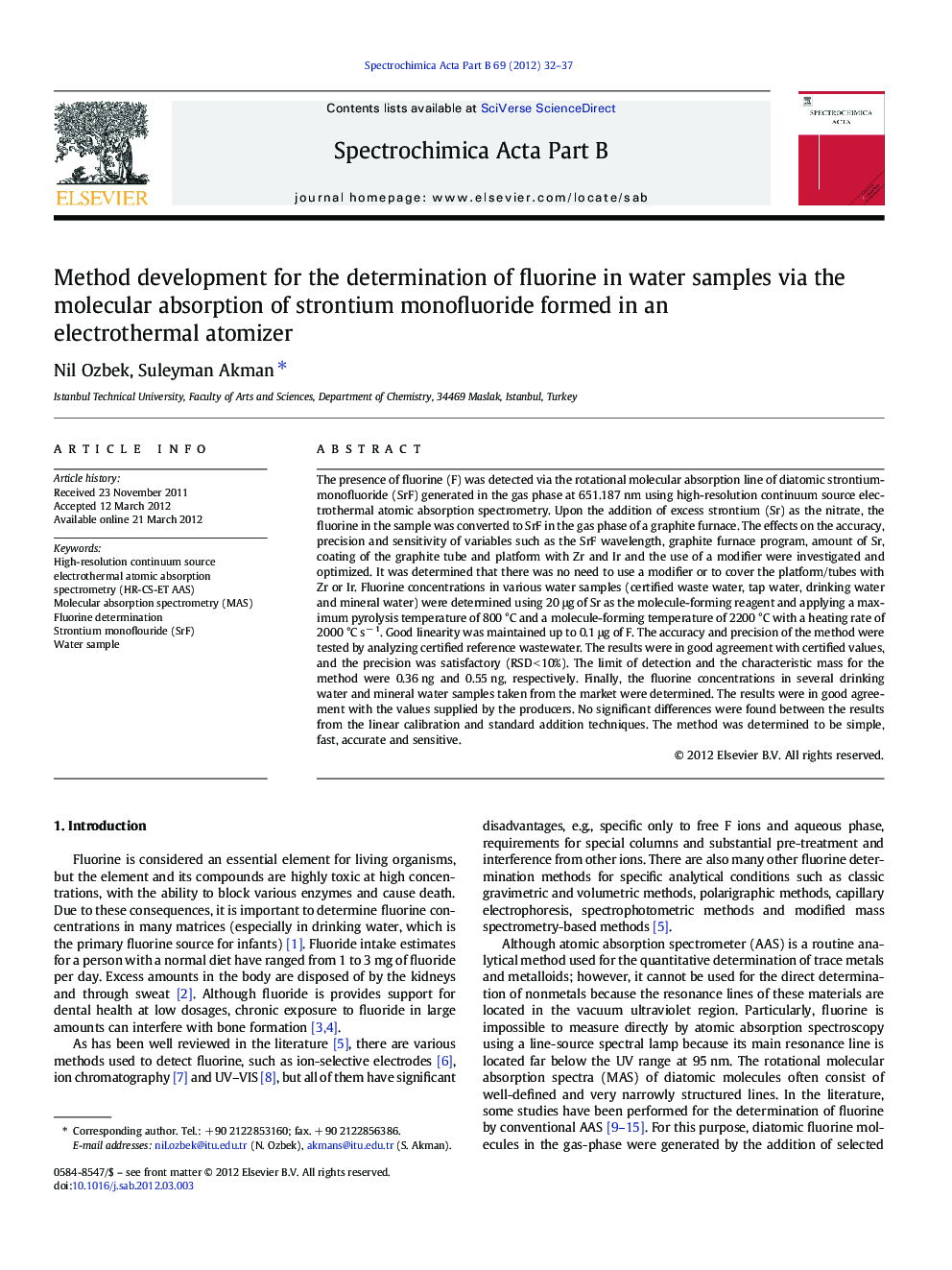| Article ID | Journal | Published Year | Pages | File Type |
|---|---|---|---|---|
| 1240512 | Spectrochimica Acta Part B: Atomic Spectroscopy | 2012 | 6 Pages |
The presence of fluorine (F) was detected via the rotational molecular absorption line of diatomic strontium-monofluoride (SrF) generated in the gas phase at 651.187 nm using high-resolution continuum source electrothermal atomic absorption spectrometry. Upon the addition of excess strontium (Sr) as the nitrate, the fluorine in the sample was converted to SrF in the gas phase of a graphite furnace. The effects on the accuracy, precision and sensitivity of variables such as the SrF wavelength, graphite furnace program, amount of Sr, coating of the graphite tube and platform with Zr and Ir and the use of a modifier were investigated and optimized. It was determined that there was no need to use a modifier or to cover the platform/tubes with Zr or Ir. Fluorine concentrations in various water samples (certified waste water, tap water, drinking water and mineral water) were determined using 20 μg of Sr as the molecule-forming reagent and applying a maximum pyrolysis temperature of 800 °C and a molecule-forming temperature of 2200 °C with a heating rate of 2000 °C s− 1. Good linearity was maintained up to 0.1 μg of F. The accuracy and precision of the method were tested by analyzing certified reference wastewater. The results were in good agreement with certified values, and the precision was satisfactory (RSD < 10%). The limit of detection and the characteristic mass for the method were 0.36 ng and 0.55 ng, respectively. Finally, the fluorine concentrations in several drinking water and mineral water samples taken from the market were determined. The results were in good agreement with the values supplied by the producers. No significant differences were found between the results from the linear calibration and standard addition techniques. The method was determined to be simple, fast, accurate and sensitive.
► F is determined via MAS of SrF at 651.187 nm using HR-CS-ET AAS. ► There is no need to use any modifier and to cover the platform/tubes. ► A good linearity is maintained up to 0.1 μg of F. ► The limit of detection and characteristic mass for the method are 0.36 ng and 0.550 ng, respectively. ► The method is simple, fast, accurate and sensitive.
